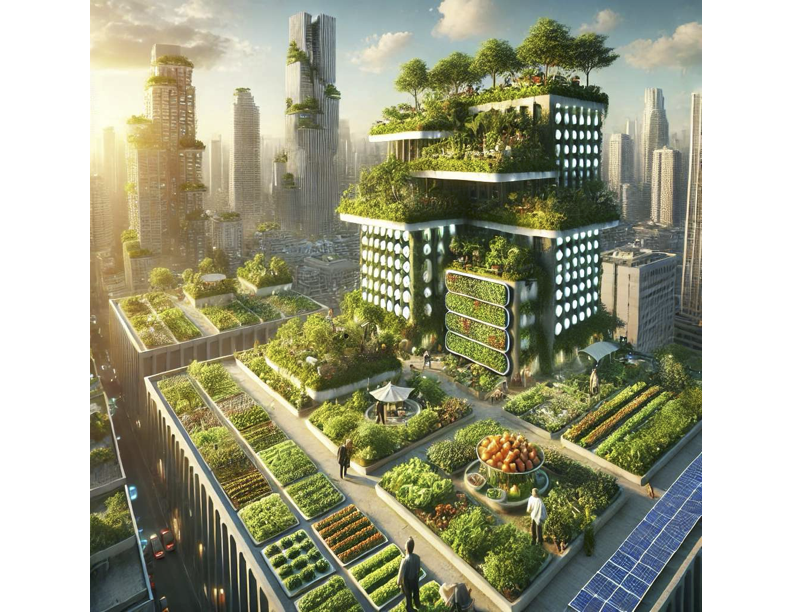What is Urban Farming?
Urban farming, also known as urban agriculture, is the practice of cultivating, processing, and distributing food in or around urban areas. It encompasses various methods such as rooftop gardens, vertical farms, hydroponics, aquaponics, and community gardens.
Benefits of Urban Farming
- Increased Food Security
- Reduces dependency on imported food
- Provides fresh, locally grown produce
- Environmental Sustainability
- Reduces carbon footprint from food transportation
- Improves air quality and reduces urban heat
- Efficient Land Use
- Transforms vacant lots, rooftops, and underutilized spaces into productive farms
- Supports green infrastructure in cities
- Economic Opportunities
- Creates jobs and income sources for urban farmers
- Encourages entrepreneurship in sustainable agriculture
- Community Engagement & Health Benefits
- Promotes access to healthy, organic food
- Strengthens social bonds through community gardening initiatives
Popular Urban Farming Techniques
- Rooftop Farming: Utilizing building rooftops for crop production
- Vertical Farming: Stacking crops in layers to maximize limited space
- Hydroponics & Aquaponics: Soil-less growing methods using water-based nutrient solutions or fish waste
- Community Gardens: Shared spaces where local residents grow their own food
- Microgreens & Indoor Farming: Growing nutrient-dense plants in small indoor spaces
Challenges of Urban Farming
- High initial setup costs for technologies like hydroponics
- Land access and zoning regulations in cities
- Limited knowledge and technical expertise among urban dwellers
Future of Urban Farming
With technological advancements and growing environmental awareness, urban farming is set to play a crucial role in future food systems. Governments, businesses, and communities are increasingly investing in urban agriculture as a solution to food insecurity and climate change.

